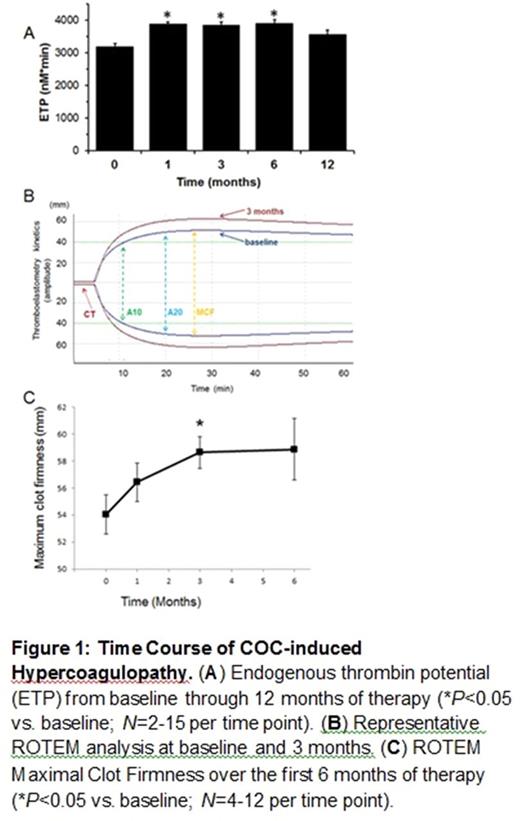Abstract
Objectives: The objective of this pilot study was to evaluate the effect of combined oral contraceptives (COC) on rotational thromboelastometry (ROTEM®) and Technothrombin®TGA (thrombin generation assay) coagulation kinetics, as a surrogate marker of thrombotic risk, in adolescent females. The epidemiology of risk factors associated with contraception-related venous thromboembolism (VTE) in adolescents is not well defined. Estrogen contained in COC produces activated protein C resistance thus increasing the risk of thrombosis. The risk of COC-related VTE is significantly impacted by duration of COC use. The highest risk of COC-related VTE is during the first 6 to 12 months in first-time users. Furthermore, the risk of contraception-related VTE is higher for obese women as compared with non-obese women. Recent evidence found that endogenous thrombin potential (ETP) increased during COC initiation, but have not followed users longitudinally.
Methods: This longitudinal cohort included adolescents, ages 12-21 years, initiating COC containing 35 mcg ethinyl estradiol/0.25 mg norgestimate. Balanced recruitment was utilized to strive for equal numbers of obese and non-obese subjects and varied gynecologic age (i.e. years from menarche). Exclusion criteria included personal/family history of thrombophilia or venous thromboembolism, personal history of bleeding diatheses, contraindication to COC, tobacco use, hemoglobin < 10 g/dL, and anti-platelet or anticoagulant medication use. Citrated whole blood samples were collected at baseline (pre-COC), 1, 3, 6, and 12 months for coagulation studies (TGAÒ and ROTEMÒ) and FSH suppression to document COC adherence. TGA parameters included: ETP and peak thrombin production. ROTEMÒkinetic parameters evaluated included: clotting time (CT); viscosity amplitude at 10 & 20 minutes (A10 & A20); and maximum clot firmness (MCF). Changes in parameters were explored over 6 months of COC exposure for coagulation kinetics and 12 months for ETP.
Results: Interim analyses included 15 subjects out of a planned 30 total (86.7% White; mean age 16.8 ± 2.8 years; mean BMI 25.1 kg/m2, BMI range 16.2-43.3 kg/m2, 33.3% obese). Post-COC, mean ETP was elevated above baseline (3176.8 nM*min) as early as 1 month and was highest at 6 months (3869.6 & 3890.8 nM*min; p<0.05) (Figure 1A).Mean peak thrombin production was increased from baseline to 6 months (179.5 vs 224.7 nM; p<0.05). From baseline to 3 months, there was a significant (p<0.05) increase in mean A10 (48.0 vs. 52.1 mm), A20 (53.8 vs. 58.6 mm), and MCF (54.0 vs. 58.6 mm) (Figures 1B,1C).There was a significant decrease in mean CT from baseline to 6 months (252.6 vs. 210.6 seconds; p<0.05).
Conclusions: After COC initiation, adolescents demonstrated hypercoagulable alterations in TGA and all ROTEM® kinetic parameters. These alterations were evident as early as 1 month but continued to increase over the next 5 months. Continued study will assess if hypercoagulable alterations persist at 12 months. Further study will explore the impact of obesity status at COC initiation on thrombotic risk, as assessed by these global coagulation assays.
No relevant conflicts of interest to declare.
Author notes
Asterisk with author names denotes non-ASH members.


This feature is available to Subscribers Only
Sign In or Create an Account Close Modal